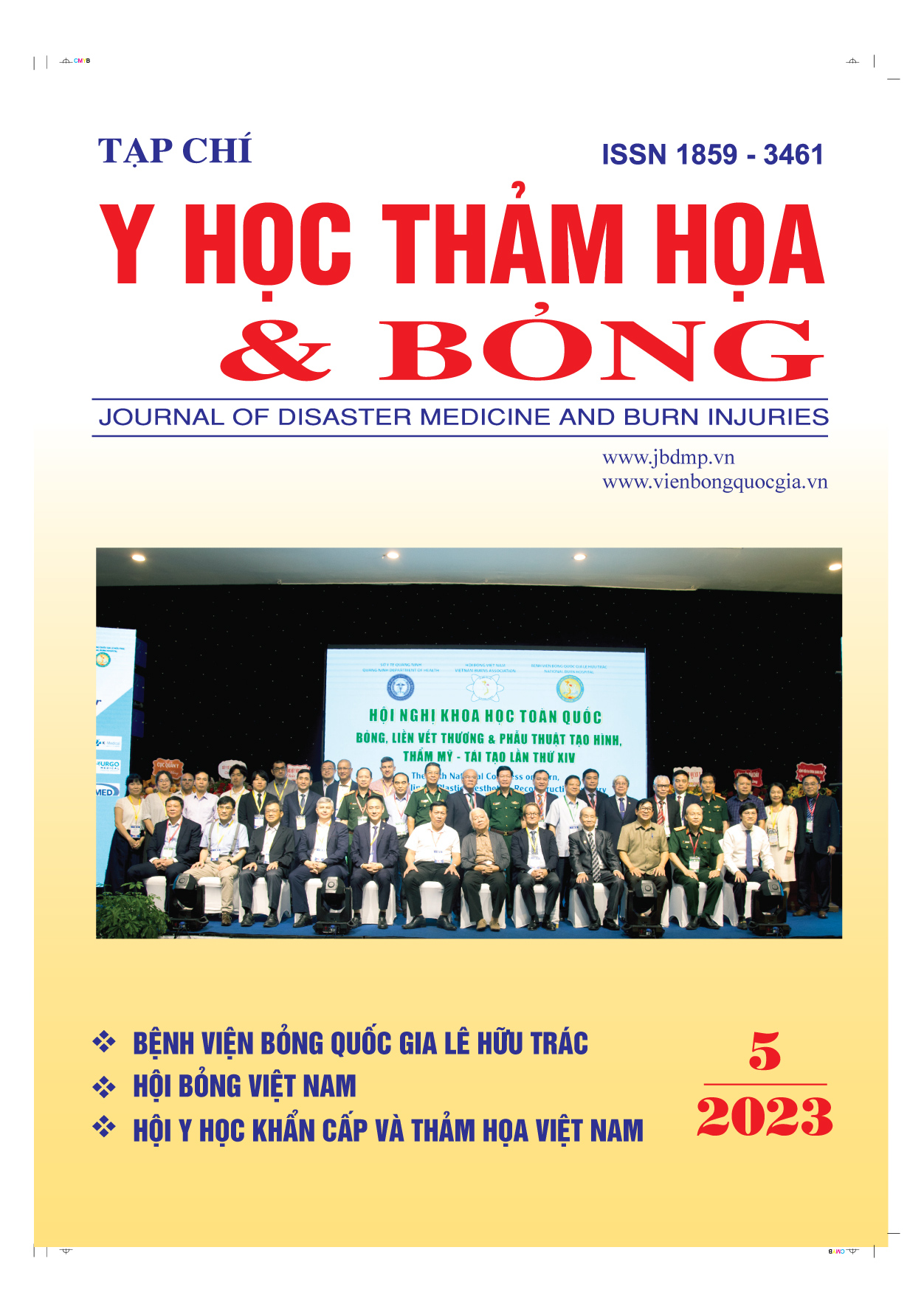Successful application of surgical mesh in the treatment of deep burns injury of anterior abdominal wall in adults due to high voltage electricity
Main Article Content
Abstract
Reconstructive repair of entire abdominal wall defects after debridement of electrical burn necrosis remains a clinically challenging task. Ideal abdominal wall repair surgery means restoring the integrity of the abdominal wall and maintaining abdominal wall tension to prevent the occurrence of abdominal wall hernia. When treating large full-thickness defects, skin flaps are a good option for repair but are difficult to apply in most cases.
Surgical mesh is a woven mesh used as a permanent or temporary support for organs and other tissues during surgery that is widely used around the world. One of the most popular current applications of surgical mesh is the treatment of abdominal wall hernias, ensuring stable, long-term abdominal wall tension is maintained, and Polypropylene (PP) is a frequently used type of mesh. However, this material is not widely used in the treatment of deep burns in the abdominal area.
We would like to introduce a case of abdominal wall defect due to high-voltage electrical burns that were successfully treated when using surgical mesh combined with treatment.
Article Details
Keywords
Deep burns injury of anterior abdominal wall, adult, surgical mesh
References
2. Miladick R. A., Pickrell K. I., Royer J. R., et al (1969). Skin graft reconstruction of a massive full-thickness abdominal wall defect. Pk. Recomfr. Surg. 43, 587.
3. Neumayer, Leigh; Giobbie-Hurder, Anita; Jonasson, Olga; Fitzgibbons, Robert Jr.; Dunlop, Dorothy; Gibbs, James; Reda, Domenic; Henderson, William (2004-04-29). "Open Mesh versus Laparoscopic Mesh Repair of Inguinal Hernia". New England Journal of Medicine. 350 (18): 1819-1827.
4. Haberal M. (1986). Electrical bums: a five-year experience - 1985 Evans Lecture. J. Traumu. 26, 103.
5. Bingham H. (1986). Electrical bums. Clin. P/ask Surg. 13, 75.
6. Abdominal wall reconstruction in an electrical burn with a myocutaneous tensor fasciae latae island flap. Case report.
7. Stone HH, Fabian TC, Turkleson ML, Jurkiewicz MJ. Management of acute full-thickness losses of the abdominal wall.Ann Surg 1981; 193: 612±8
8. Mathes SJ, Steinwald PM, Foster RD, et al. Complex abdominal wall reconstruction: A comparison of flap and mesh closure. Ann Surg 2000;232:586-96.
9. Burger JW, Luijendijk RW, Hop WC, et al. Long-term follow-up of a randomized controlled trial of suture versus mesh repair of incisional hernia. Ann Surg 2004; 240: 578-83.
10. Hultman CS, Clayton JL, Kittinger BJ, et al. Learning curves in abdominal wall reconstruction with components separation: one step closer toward improving outcomes and reducing complications. Ann Plast Surg 2014;72:S126-31.
11. Sukkar SM, Dumanian GA, Szczerba SM, et al. Challenging abdominal wall defects. Am J Surg 2001;181:115-21
12. Tanasescu C, Faur M. and Sabau D. Day-case surgery in the context of inguinal hernia repair by the modified Lichtenstein technique - A single-center experience. Chirurgia (Bucur). 114:115-120. 2019.


